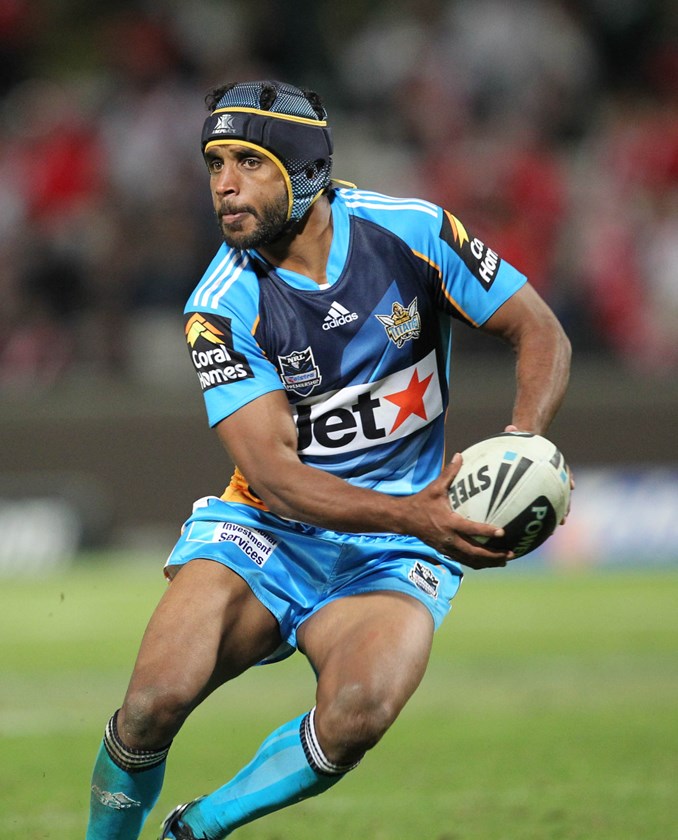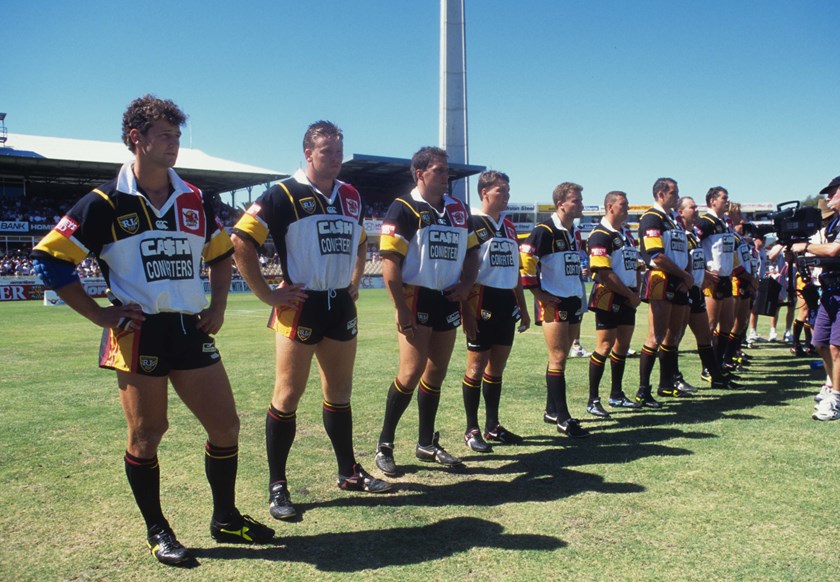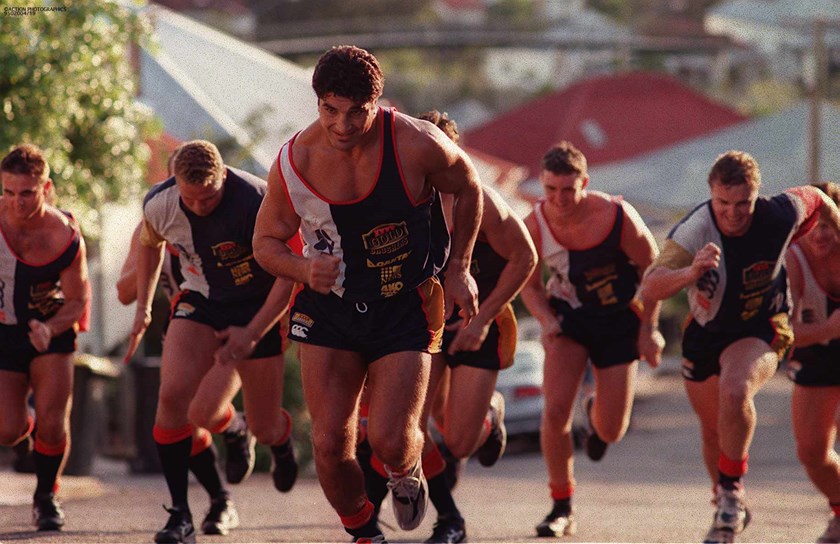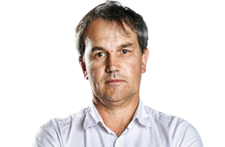The appointment of Wayne Bennett as foundation coach is arguably the best recruit the Dolphins will make but the first player to join the NRL’s newest club should also be a statement signing.
That’s the advice of those who have set up new clubs in the past, with Peter Mulholland and Darryl Van de Velde believing that the Dolphins should follow the lead of the Perth Reds, South Queensland Crushers and Gold Coast Titans, who used a marquee signing to attract other players.
The Titans targeted Preston Campbell as their first recruit and his signing helped lure the likes Luke Bailey, Scott Prince and Anthony Laffranchi to the club ahead of their entry to the Telstra Premiership in 2007.
Former NSW, Australian and Panthers premiership winning forward Mark Geyer was the first player signed by Mulholland for the Reds in 1995, while Van de Velde’s first recruit for the Crushers was Queensland star and ex-Broncos dual grand final winning second-rower Trevor Gillmeister.
“It’s critical that they get the first signing right and make a really big statement,” Van de Velde said.
“The other players are sitting back waiting to see who they are going to sign so that statement needs to be made early.”

It’s a common theme for new teams across the codes, with AFL superstar Gary Ablett jnr being the first marquee star for the Gold Coast Suns in 2011.
Socceroos stars Aaron Mooy and Tommy Oar were the respective inaugural signings of West Sydney Wanderers in 2013 and Macarthur FC in 2020.
The Dolphins were able to commence negotiations on November 1 with players off contract at the end of next season, who are listed in NRL.com's Signings Tracker.
Recruitment guru Peter O’Sullivan has moved from the Warriors to work with Bennett in building an inaugural roster.
“They have already got the biggest fish they could have landed straight away,” said Mulholland, who is currently the Raiders’ recruitment manager and previously worked with Bennett at the Knights.
“Now what they have got to do is build a side that is reflective of Wayne and they do certainly need to look at a marquee player because it does tend to attract others.
“Wayne has got open slather because he is not picking up anyone else’s mistakes. There is no salary cap hindrance, he has got a cool $10 million in his pocket to spend, but they can’t be seen to be missing out on too many.
“It has got to be discreet and kept behind closed doors as best they can because it can create a bit of a stench if it looks like they are missing out on players they go after.”
Bennett factor
Mulholland was the coach of the Western Reds when they joined the ARL premiership as one of four new clubs in 1995, along with the South Queensland Crushers, North Queensland Cowboys and Auckland Warriors.
“It was different for me in Perth because I wasn’t Wayne Bennett,” Mulholland said. “I was a reserve grade coach who was given a first grade job. This is the greatest coach that the game has seen.
“I had to get Mark Geyer and get Brad Mackay to get other people to come. Mark was playing for the Umina Bunnies at the time [after a series of off-field incidents] so we took a risk in signing him but it got us unlimited publicity.

“His signing was on the front and back page of the [now defunct] Mirror in Sydney and it got us the front and back page of the West Australian so straight away - whether it was through notoriety or whatever - it got us that publicity that we needed.
“That was qualified by the signing of Craig Innes, Brad Mackay, Brendon Tuuta, Mick Potter and those sorts of players, and the kids coming through like Rodney Howe, Matt Fuller and Matt Geyer.”
Competitive from start
With four new teams competing for players, Van de Velde focused on developing young talent such as Travis Norton and Clinton Schifcofske, while recruiting the likes of Gillmeister, Mark Hohn and Mario Fenech to lead the team around.
“They were really experienced players and had been in winning teams so they were good for us but we didn’t last long enough to see the benefits,” said Van de Velde, who was the Crushers CEO in the first of their three seasons in the then-ARL premiership.
“You need to be competitive in this market for sponsorship and fans. If you are not competitive you are going to struggle off the field.
“The other clubs signed their players beyond our entry into the competition, so we had to scratch through contract lists to find who was available and, basically, I looked at a longer term plan with the younger kids.
“A lot of players live in Sydney and would have to relocate so there are some challenges there for the Dolphins, but some Queenslanders would be happy to come back.”
Heartland club
The Reds also folded after the 1997 season and many of their players, headed by Howe, Matt Geyer and Robbie Kearns moved to the new Melbourne team, which also benefited from the dissolution of the Hunter Mariners, with Brett Kimmorley and Scott Hill among the Storm’s other recruits in 1998.
“The club spent a lot of money getting people to Perth but in Queensland you don’t need that,” Mulholland said.
“We were in a whole new market place for rugby league and we had to battle the AFL. They bought in the Fremantle Dockers to combat us, so we had a lot going against us.

"The Dolphins are a Queensland club so it will be a lot easier being in a traditional rugby league heartland.”
The Dolphins have held ambitions of joining the premiership for more than 30 years and Van de Velde was coach of Redcliffe when the Broncos were chosen ahead of them to become the first Brisbane team in 1998.
The club instigated court action to prevent the Gold Coast using the Dolphins nickname before their entry in 2007 because they also hoped to be admitted to the NRL.
Van de Velde later coached Castleford and the London Broncos before returning to head up the Crushers in 1995 and he brought Super League stars Mike Ford and St John Ellis with him.
“I was pleased to see the Dolphins get in because they have worked really hard for a long time,” said Van de Velde, who is now a QRL director.
“There are going to be 80,000 people moving to live between Redcliffe and Caloundra so if the NRL are looking for a new audience they have hit the mark.”

